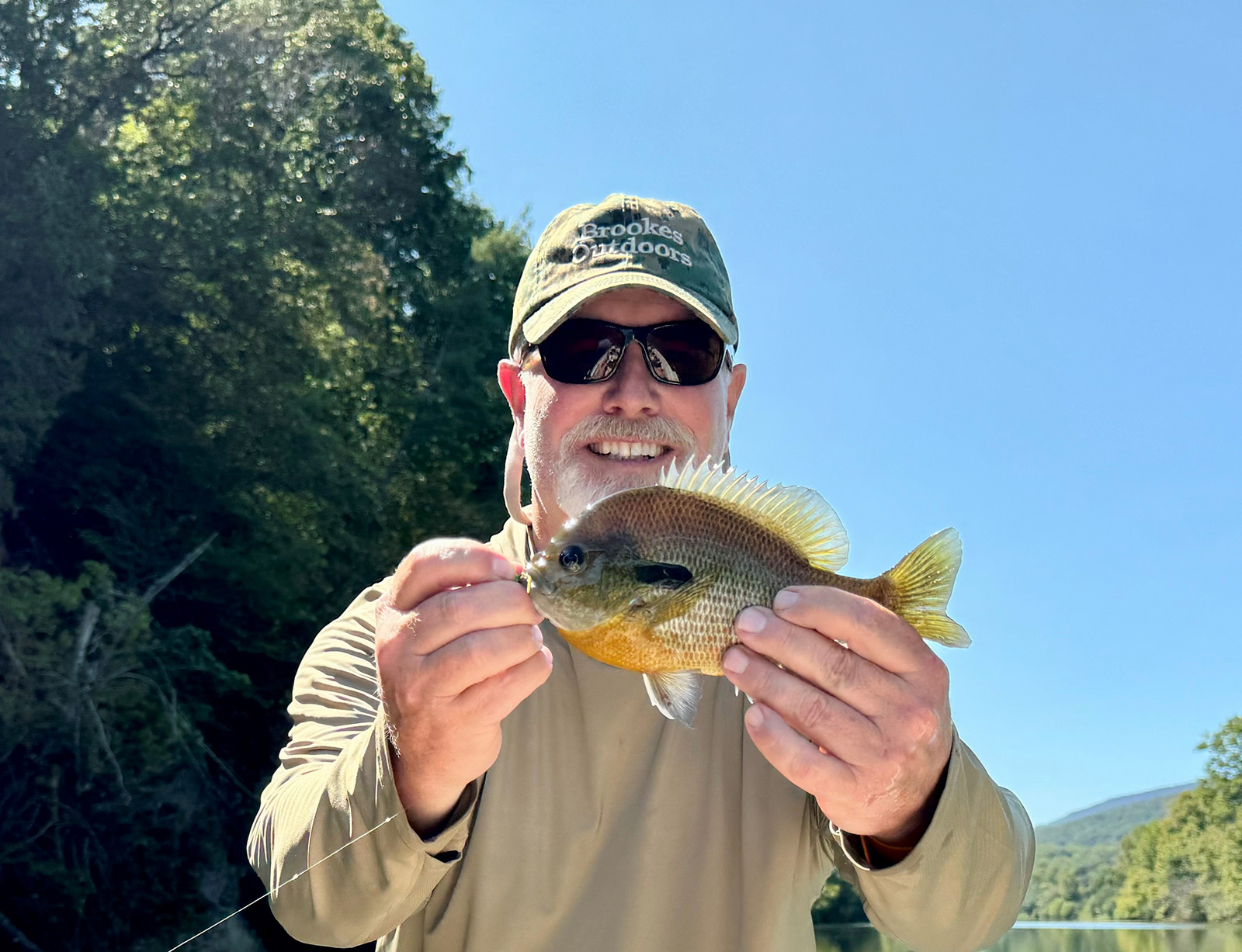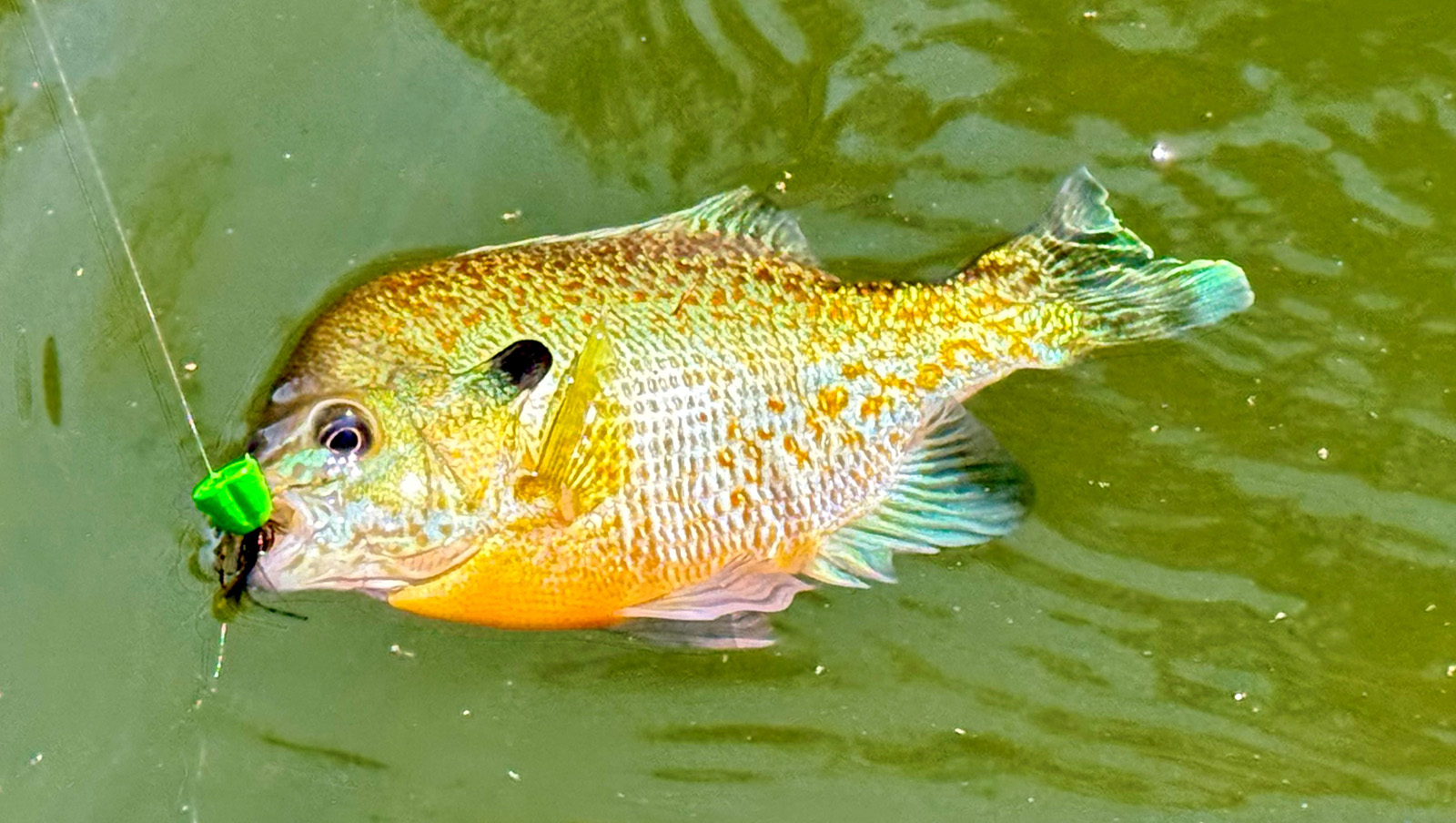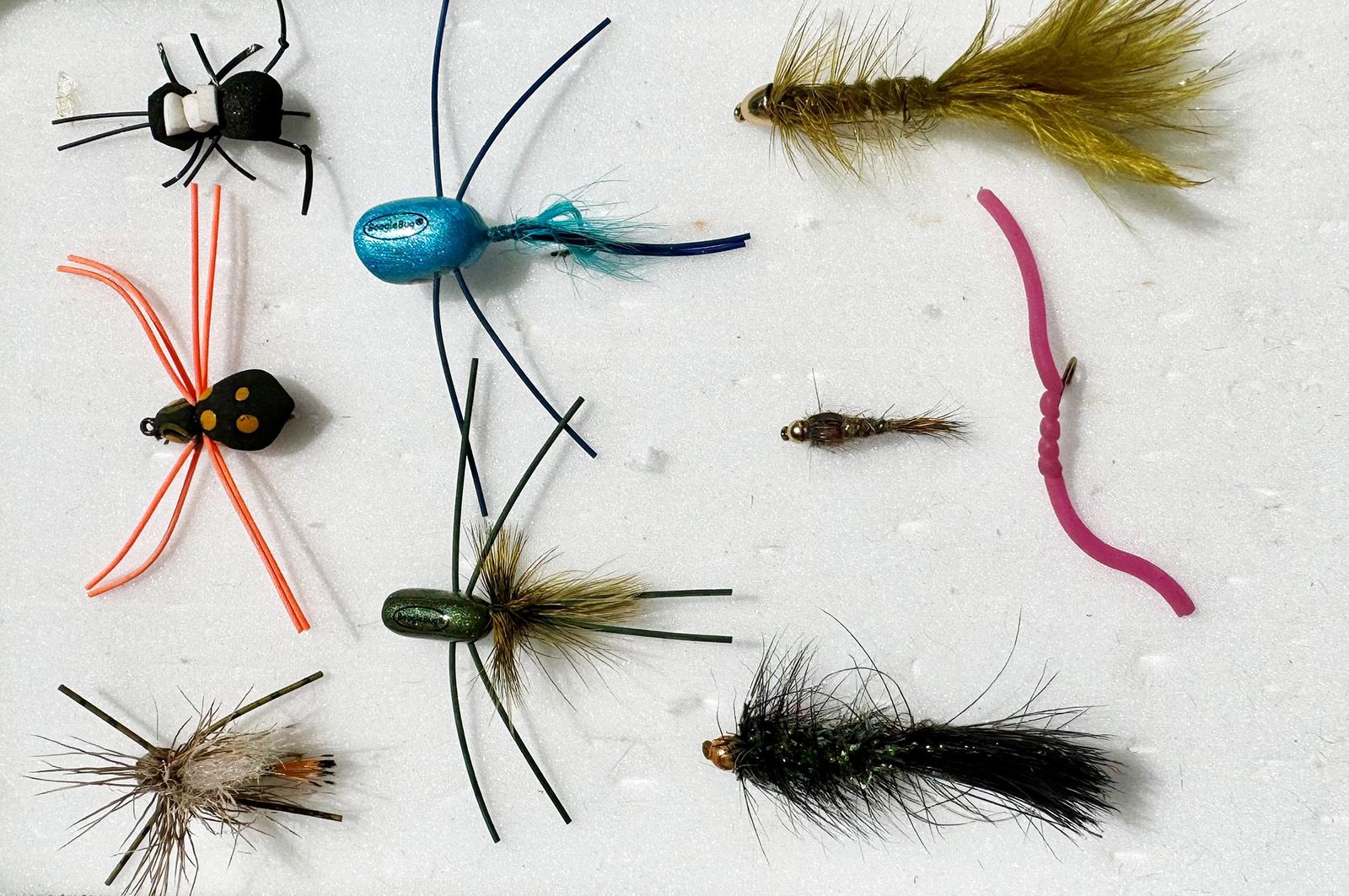By Dr. Peter Brookes
Photos by Dr. Peter Brookes
To the newbie, fly fishing can seem complex—even downright intimidating—with its long list of line types, range of rod weights, number of knots, countless feathery flies, and tomes (yes, tomes!) of technical terminology.
Not to mention learning how to cast a line….
Sure, fly fishing can be a challenging way of angling at first, but as geniuses and jocks like to say: “It’s the hard that makes it good.” Without question, it’s a rewarding approach to fishing, as I hope you’ll come to experience. I’ve been hooked (pun intended) since the first time I tried it.

A redbreast sunfish on the fly is reason to smile.
And, if you’re interested, there’s probably no better way to learn to fly fish than to pursue Virginia’s plentiful panfish, a name originating from their unique size and shape that make them fit well into a frying pan. Among anglers, panfish informally make up a pretty broad category of freshwater fish. Depending on the locality, it could include bass, crappie, perch, and sunfish, among others.

You’d need a big skillet for this 9-inch panfish!
That noted, to stay in good graces with the fishery biologists, panfish isn’t an official scientific grouping. For our purposes, Virginia panfish will refer largely to bluegills, which some call bream (pronounced “brim”), and redbreast sunfish.
What’s really great about Virginia panfish is they’re plentiful. You can also find them in a variety of waters (e.g., rivers, creeks, lakes, ponds, and reservoirs) in the Old Dominion, making them very accessible to the angler.
They. Are. Everywhere.
Another terrific thing about panfish is that they’re rapacious feeders—and, as a result, easy to catch. While trout, a common target of fly anglers, can be snooty about taking a fluffy fly, panfish are, arguably, the exact opposite. They’ll eat just about anything—within reason—you cast at them.
Indeed, many times while fishing for largemouth bass in a local lake, I’ve purposely put on a fly that is too big for panfish so I don’t have to hook one every cast and can concentrate on big, bad bucketmouths. I’m not kidding.
I have to admit that it’s fun to see one, or more, panfish strike repeatedly at a big fly, trying to figure out how to make a meal of it…ramming it to stun it and/or dragging it under to drown it. If nothing else, you have to admire the panfish’s grit.
Of course, these characteristics—good numbers, wide availability, and willingness to engage in a fishing fist-fight—make the humble panfish an ideal target species for learning to fly fish for beginners–young and/or old… er, mature.
As a starter fly fishing setup for panfish, I’d recommend a 9-foot, four- to six-weight fly rod, equipped with an (inexpensive) reel and a floating fly line. (This outfit is also terrific for Virginia trout, too!) On the business-end of the floating line, I’d attach a 3X-5X leader (five- to eight-pound test) and an 8-size to 12-size fly since panfish have rather small mouths. (You’ll see what I mean when you catch your first one!)
Recommended fly types for panfish can vary widely. Feel free to ask a fly fishing friend about their favorite fly for panfish. But I’d recommend pulling up a chair and getting a cup of coffee as it’s likely going to be a while before they finish their deeply impassioned monologue on fly choice. I digress, but you’ve been warned.
Anyway, this time of year, I’d cast a fly pattern that floats, imitating common fish fodder such as a grasshopper, cricket, ant, or even a spider with rubber legs that has lost its way unhappily into the water.

Another popular fly is the micro-popper, which makes a blurp sound and moves a lot of water when stripped forcefully across the surface. These flies alert fish to the presence of potential prey.
Delight in the strike when the panfish attacks your fly from the deep and, with a splash, quickly disappears below the surface with its quarry. A surface-take is one of the great highlights of fishing. Revel in the fish’s eat, but don’t forget to set the hook!
In the cooler months, when those terrestrials aren’t abundant or have gone off to overwinter, you can cast a fly, such as a wooly-bugger (a baitfish imitation) or a nymph pattern or squiggly (rubber) worm under a strike indicator (bobber), which will lead to a line-stealing, sub-surface strike.
After gearing up, I’d head to a local pond or lake that allows plenty of room for casting to avoid sacrificing too many of your flies to the tree- and bush-gods that (like panfish) love to grab your flies. Low-light conditions tend to increase the hook-up success rate.
While you work on your fly fishing casting mechanics and accuracy and hooking, playing and landing fish, the enthusiastic and willing panfish will serve as your fly fishing mentor and piscatorial playmate.
And there’s no reason to stop targeting panfish when you’ve improved your fly fishing game. You’ll hook them while trout fishing and/or bass fishing—and they’ll put a bend in your rod with their strong swimming. These puny panfish punch above their weight.
In addition, when Virginia’s largemouth bass, smallmouth bass, rainbow trout and/or brown trout are moody and not biting, the panfish can save an otherwise lost day of fly fishing.
I like, er, love fly fishing for a lot of reasons, including the high-level of activity involved in casting, the wide range of approaches and techniques, the artistry of the artificial fly, and the mental challenge of trying to fool a fish with it. Of course, when I fail, I wonder who has the bigger brain…?
Lucky for you, Virginia is a great state for fly fishing–and panfish are a great way to get started with this popular form of angling. So get yourself some fly fishing gear, get a Virginia fishing license, and go play with some panfish.
Dr. Peter Brookes is an award-winning, Virginia-based outdoor writer at Brookes Outdoors. His favorite panfish fly is a dark green micro-popper. BrookesOutdoors@aol.com


